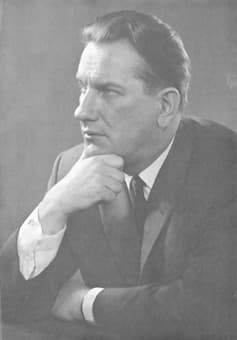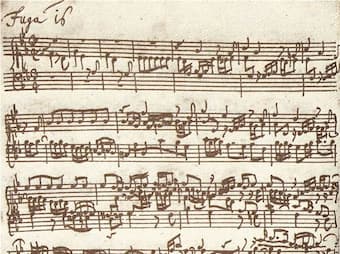
Tālivaldis Ķeniņš
Latvian-born composer Tālivaldis Ķeniņš (1919-2008) was educated first in Latvia and then in France, and made his home in Canada, serving on the faculty of the University of Toronto. He composed across many genres, with his output including 8 symphonies, many symphonic miniatures, 12 instrumental concertos, and a wide array of chamber music, piano, and organ works, as well as solo and choral pieces, three cantatas, and an oratorio.
When he started his musical studies in Riga, after returning from high school in Grenoble, he was an uninspired composer, later describing himself as a ‘first-rate ugly duckling.’ Leaving Latvia just before the second Soviet invasion in 1944, he attended the Paris Conservatoire, but was conscripted into the military, serving as army organist and clerk. His father had been deported by the Soviets and his mother, falling ill, returned to Soviet-occupied Latvia.

Olivier Messiaen
After the war, he returned to Paris and studied music analysis with Oliver Messiaen, composition with Tony Aubin, and theory with Simone Plé-Caussade. He graduated from the Conservatoire in 1950, with the first prize in composition for his Cello Sonata. As a composer trained in France, he constructed his music on the basis of logic and rationality, but in a laconic, Latvian manner. He and his wife moved to Canada in 1951. He served at the University of Toronto for 32 years.
The never-ending transformation of nature was an important part of his creative process. One aspect of this was his love of the compositional device of the fugue: hence his unusual Symphony No. 6: ‘Sinfonia ad Fugam.’

Bach: Well-Tempered Clavier
The work was commissioned in 1978 by the National Arts Centre Orchestra (Canada). It springs forth from his love for J.S. Bach and The Well-Tempered Clavier. He wrote about this work:
Since my early acquaintance (and durable love) with the music of J.S. Bach, I have always been fascinated by the C sharp minor fugue of Book I of the Wohltemperiertes Klavier. Besides loving to play it as written, I used to extemporize around the four-note subject and its two counter-subjects, imagining other possible expressions of this thematic material. Later, possibly under the analytical spell of my teacher Messiaen, I started to picture this material through an orchestral tapestry, surrounded by a variety of canonic rhythms, thicker sonority patches and juxtaposition of tension/release effects of a more dramatic nature.
The subject for his fugue is what has been called the ‘sublime subject,’ the B-A-C-H motif, here expanded to C#-B#-E-D#. This ability to capture Bach’s name in notes also inspired composers such as Beethoven, Wagner, Franck, Richard Strauss and others.
Tālivaldis Ķeniņš: Symphony No. 6, “Sinfonia ad Fugam” (Latvian National Symphony Orchestra; Guntis Kuzma, cond.)
In Canada, Ķeniņš encouraged not only Canadian music but also Latvian music, founding the Toronto Latvian Concert Association in 1959, and serving for as President of the Canadian League of Composers (1973-1974). He also was appointed honorary professor of the Jāzepa Vītola Latvijas Mūzikas akadēmija (JVLM) in Riga, Latvia. In his early music studies in Latvia, Ķeniņš had studied with Jāzeps Vītola.
Once, responding to a question about being a wanderer, Ķeniņš was typically sharp in his response: “My life is oriented in two different environments. One comes with the homeland, the meaning and meaning of the pride of independent Latvia. The other – spiritual maturity, in the culture and spirit of the universal spiritual pulse. Both are equally important and have determined the meaning and direction of my life. Two worlds: both glorious, both rich.” He’s credited with expanding Canada’s classical music by bringing in European idioms to expand the already wide-spread British models that had held sway before he arrived.
For more of the best in classical music, sign up to our E-Newsletter



